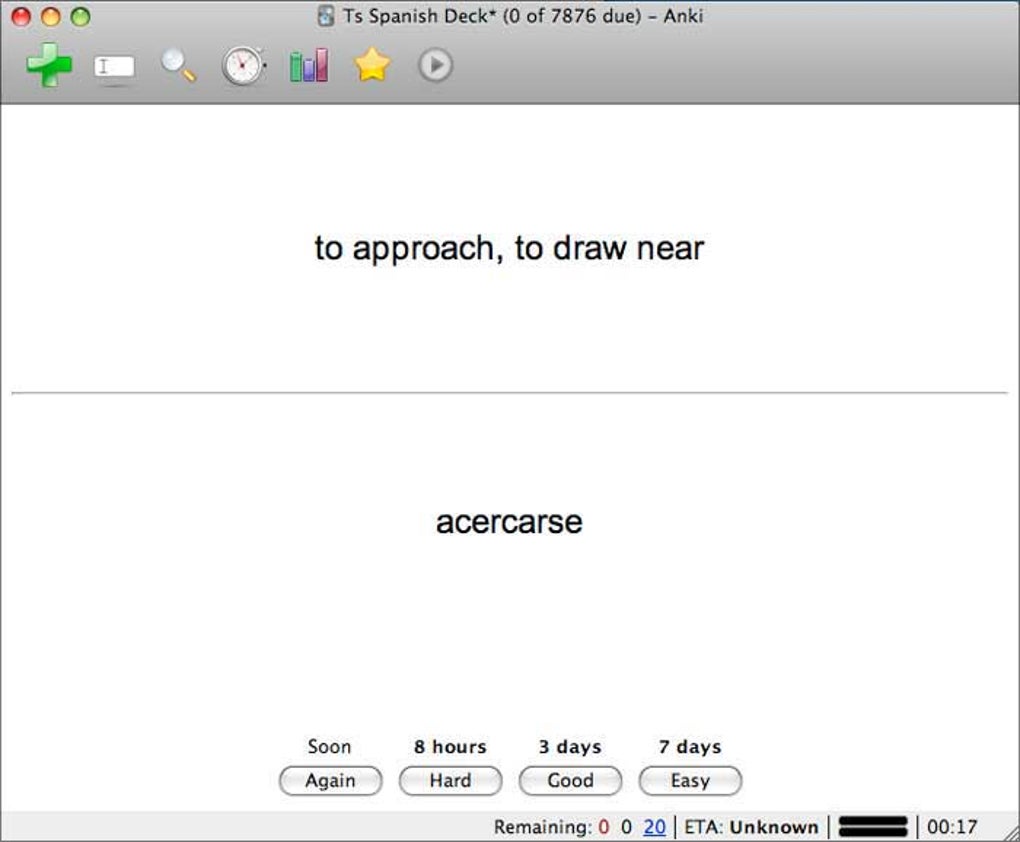

Pretty is great, but it’s not everything.New to Japanese? New to the sub? Read the Wiki! Nobody does flashcards better than Anki cards. Its approach is very similar to Quizlet’s and can benefit anyone who needs to memorize things.ĭuolingo and Memrise, for example, are really pretty programs that attempt Spaced Repetition but don’t quite hit the mark. The program allows you to create flashcards and decks, or import decks made by other users. This site uses spaced repetition technology, an intellectual science technique that enables fast and extended memorization. It then waits longer and longer to show you the cards that were easier for you to remember, and shows you the most difficult ones (the ones you got wrong) right away, as if they were brand new.Īnki is a more straightforward learning platform, unlike Quizlet, which has gamification qualities. Anki uses this information to plug these cards into its algorithm. You do this by selecting: easy, medium, or hard.

The Anki app works like this: you plug in your vocab, review your words for the day, then tell Anki how easy or difficult those words were to remember. Nonetheless, let me explain what Spaced Repetition is, and why you absolutely need it in your language learning life. This little trick of knowing what terms to show you, and when, is known as Spaced Repetition.
ANKI APP ALTERNATIVE HOW TO
The bad thing about Anki is, you’ll have to invest some time to learn how to customize your own flashcards.Īnki does, however, have a large database of public user-created decks to choose from which list user ratings, how many cards they have and what type of content they contain.ĪnkiMobile costs $24.99 on iOS and free on other platforms.Īnki cards are basically digital flashcards that you can use on both your computer and your mobile device, but they’re so, so much more than that.Īnki only shows you words that you’re on the verge of forgetting. The good think about Anki is it’s highly customizable. You can make text-based cards with words or cloze passages but the cloze feature is far from intuitive. You’ll need to add all the info yourself, one flashcard at a time, which can be time-consuming for languages with different alphabets, characters or accents you’re not familiar with. But sometimes it gets a bit repetitive.Ĭreating a new deck in Anki is definitely more labor intensive than Reji. Anki then keeps track of which cards need to be reviewed when so that you won’t forget any. Then, Anki will display a word, you check if you’re correct by hitting “show answer”, and then categorize the word again, hard, good or easy which corresponds to a time interval of 10 minutes, 4 days, 7 days or 10 days when you will next be tested. You decide how many cards you want to study per day. At first glance, you’re not likely to understand what a filtered deck, for example, is.Īnki has one standard study mode – card flipping. It’s pretty intuitive but sometimes a little confusing. It is compatible with Android, iOS, FreeBSD, macOS, Windows, and Linux.Īs far as its interface goes, Anki keeps things simple. AnkiMobile like Reji uses spaced repetition to help users memorize and retain information but is a little less user-friendly. Anki is available for both desktop and mobile, which makes it great for everybody, no matter what device you use.Īnki is available in 48 languages, including Greek, Portuguese, traditional and simplified Chinese, Thai, Hungarian, Russian, English, and more. Anki App is a cross-platform mobile and desktop flashcard app.


 0 kommentar(er)
0 kommentar(er)
